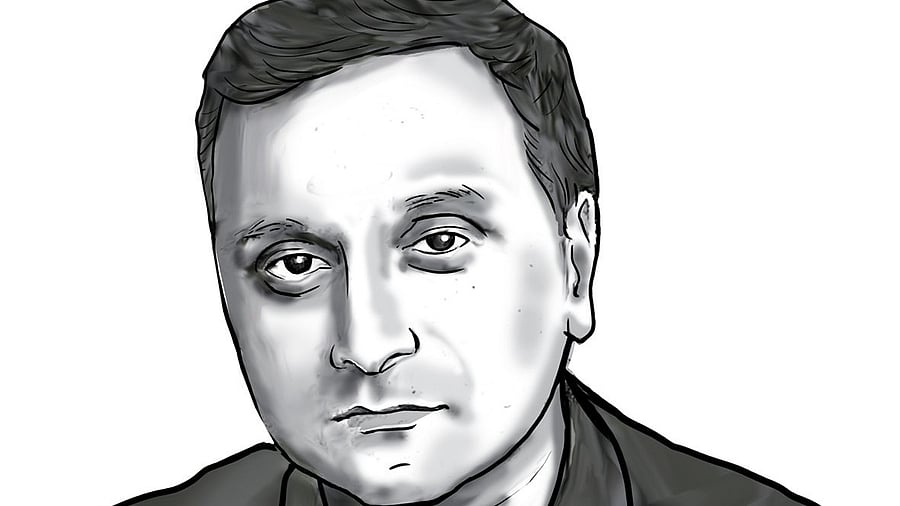
Nearly a century ago, Joseph Mohandas Kumarappa, an early Indian social scientist and the eldest brother of J C Kumarappa, the Gandhian economist, did a PhD thesis on “Tagore’s experiment in the Indianisation of education,” at Columbia University in the United States. His supervisors were the American philosophers John Dewey and W H Kilpatrick. Lawrence Surendra, the Mysore-based activist, who is getting this 1928 thesis republished, shared it with me recently.
Titled, Rabindranath Tagore: India’s Schoolmaster, Kumarappa’s thesis offers a focused, gushing reconstruction of the Bengali poet’s vision of education. Inseparable from his larger philosophical views about the nature of Western and Eastern civilisations, Tagore’s views on education asked that Western science and Eastern spiritual ideals be brought together. His ideals of education were worked out with universal humanity in mind, and avoided endorsing nationalism since that didn’t allow humans to express sympathy across national boundaries and evolve their selves freely.
Admitting that some of Tagore’s terms might appear loosely stated to those unfamiliar with “the poet’s way of thinking,” Kumarappa asks that the reader “use his imagination and sympathy and strive to discern” to understand what he seeks to say. “Even his severest critic,” he adds, “will admit that he reveals a depth of intimacy and insight which only years of moral suffering could produce.”
Scientific progress in the West, for Tagore, had not aided in “the spiritual progress of man in the West.” The contributions to the latter, he observed, was last seen in “medieval Europe, where the simple and natural man, with all his violent passions and desires, was struggling to work out a reconciliation between the flesh and the spirit.”
The advances in western scientific knowledge needed to be learnt in India. And, many Indian social reformers had indeed studied in the British education system. But there was no denying the split seen between that education system and the experiential worlds of Indians. Unlike the indigenous schools which used to, in Kumarappa’s words, “repeat the best thoughts and express the ideals of the land in the most effective form,” the British education system was a vehicle only for getting jobs in the government and the new professions, with very few pursuing agricultural and trading occupations or self-employment. The regeneration of India could be complete, however, only if the new education system had “an Indian character.”
Kumarappa offers an elaborate description of how Tagore worked out his vision at the school he started in Shantiniketan in 1901. A secluded forest setting, Tagore believed, was most suited for cultivating the inner self and its unity with the cosmos. He modelled his school along that of an ashram: learning took place outside the classroom; silent contemplation was encouraged; students cleaned their rooms and did other manual work to appreciate the dignity of labour and overcome caste prejudice; corporal punishment was absent. Since the powers of imagination and observation had to be cultivated, children in the lower classes interacted more with nature and did not use textbooks. There was no evening study for them either -- in Tagore’s memorable analogy: “Parents of little birds don’t light lamps for them.”
Arts, in particular, music, was central to the learning ethos in Shantiniketan. Sports was important, too. Not staying insular, the students offered social service to the people in the surrounding villages.
All children offered prayers at a temple without an image or an altar. Kumarappa remarks: “No animal life is to be destroyed, no image is to be worshipped, and no abuse of any man’s religious faith is to be allowed in Shantiniketan.” Religious instruction wasn’t done, he notes, but a spiritual atmosphere prevailed there.
Reflecting Tagore’s ethics and aesthetics of simplicity, little furniture or expensive equipment was found in Shantiniketan. The worship of school infrastructure, he felt, had prevented the spread of education in a poor country like India.
Tagore held a civilisational idea of India. His design for a research centre in India in his book of lectures, Creative Unity (1922), offers a glimpse:
“…we must provide for the co-ordinate study of all these different cultures: the Vedic, the Puranic, the Buddhist, the Jain, the Islamic, the Sikh, and the Zoroastrian. The Chinese, Japanese and Tibetan will also have to be added; for, in the past, India did not remain isolated within her boundaries. Therefore, in order to learn what she was in her relation to the whole continent of Asia, these cultures too must he studied. Side by side with them must finally be placed the Western culture. For only then shall we be able to assimilate this last contribution to our common stock.”
This is, of course, a broadbrush account of Tagore’s ideas and work. Revisiting Kumarappa’s impassioned thesis reveals their complexity. It also shows that the poet’s idealism radiates even amidst a crisis in our education far greater than the one he had encountered.